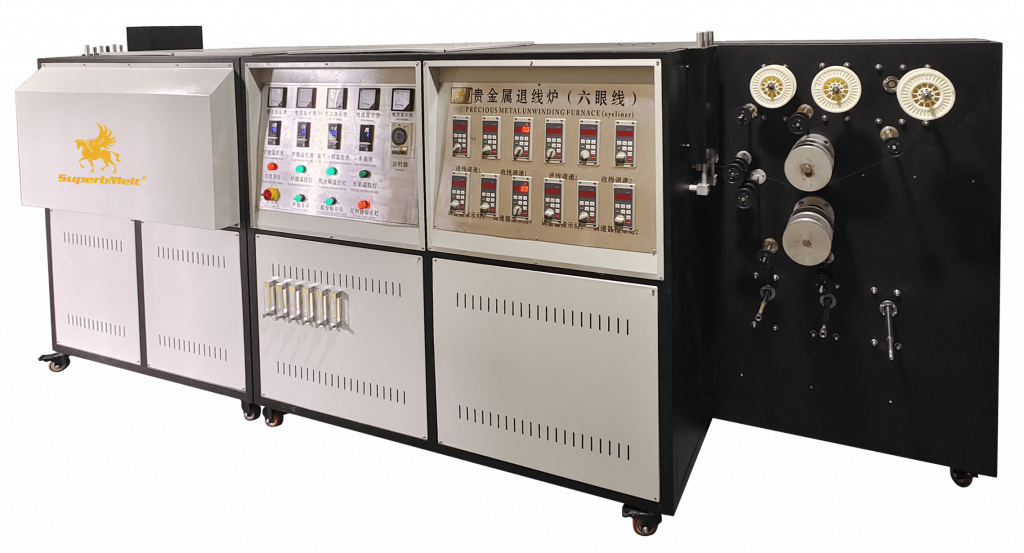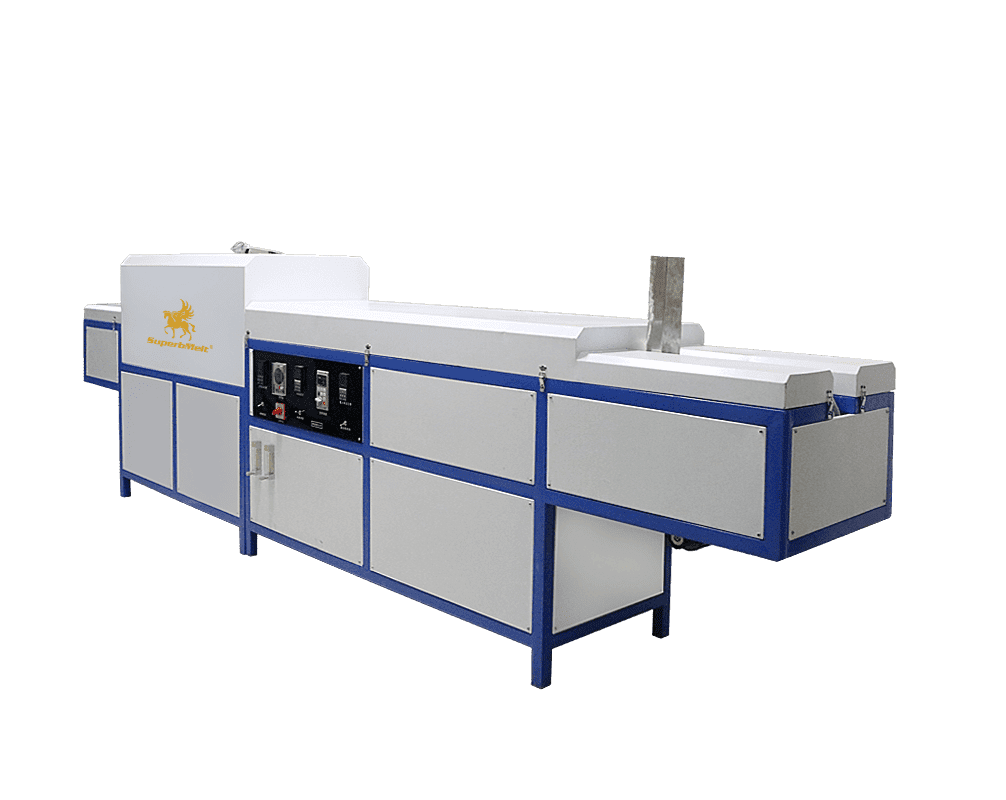Annealing Machine
Top Jewelry Casting Annealing Furnace
- Annealing is uniform and efficient
- It can operate continuously for 24 hours without interruption.
- Specifically designed for annealing precious metals like gold, silver, and platinum.
Apply Our Best Quotation
When treating precious metals like gold, silver, and platinum, an annealing machine is an essential aspect of the metal casting process. By heating the metal at a certain temperature and allowing it to cool gradually, internal tensions are released, the metal becomes softer, and its ductility and grain structure are improved. Ensuring the quality and longevity of the metal throughout the casting process is contingent upon this technique.
Due to residual tensions in the metal, the casting process without an annealing machine may result in brittle and faulty products. Using an annealing machine during the casting process makes a big impact since it gives the metal the best workability and durability possible. Annealing is thus an essential tool in contemporary metal casting operations.
Superbmelt Annealing Machine list

Wire Annealing Machine
SuperbMelt Wire Annealing Machine is used to heat and cool metal wires (gold, silver, copper, etc.) to alter their properties. Annealing involves heating the wire to a specific temperature and then slowly cooling it down, which helps eliminate internal stress and increase its ductility.
- The annealing process is uniform and efficient, ensuring continuous operation of jewelry weaving machines without chain breakage.
- Annealing can eliminate oxidation and other defects on the metal surface, improving surface smoothness and quality.
Parameter
- cooling length:1500mm
- Heating length:1200mm
- Application: Gold, Silver, Platinum, Palladium, and their alloys

Annealing Furnace
SuperbMelt annealing furnace is designed for annealing precious metal, such as gold, silver, and platinum in jewelry making. It works by the precious metal part is heated above the recrystallization temperature and then cooled after the material has been held at the desired temperature for a period of time.
The annealing process can improve the workability, mechanical properties and electrical properties of the workpiece metal. It goes through 3 stages, which are; the recovery , recrystallization and the grain growth stage.
Parameter
- Power:9kw
- Heating time:40-60 minutes
- Max. temperature:1100℃

Mesh Belt Furnace
There are three stages in the mesh belt furnace; annealing, recrystallization, and grain growth under ammonia gas. The mesh belt furnace is an annealing oven used for chain welding, metal annealing, metal tempering, jewelry annealing. In the coin minting line, the mesh belt furnace to heat precious coins or bars to make them soft and ready for acid washing.
The mesh belt furnace is used for annealing K-gold and silver link parts, and welding of chains. The mesh belt furnace improves the machinability, mechanical and electrical properties of materials.
Parameter
- Power:13kw
- Max. temperature:950℃
- Cooling way:Water cooling
Why You Could Choose Superbmelt

2 years warranty
The warranty for our machine is one year longer than the warranty provided by other factories.

ISO CE SGS approved
Professional certification bodies certify that the machines are of high quality.

Strong service team
We will give response within 24 hours against your problem by our professional engineer.
Why Choose a SuperbMelt Annealing Machine



Guide to Annealing Machine
Annealing machine application areas
Annealing furnaces are widely used in various fields, particularly in industries where metal processing and treatment are essential. Some key application areas include:
Jewelry Manufacturing: In the jewelry industry, annealing furnaces are used to soften precious metals like gold, silver, and platinum, making them easier to shape and mold into intricate designs. This process is critical for maintaining the metal’s quality during fabrication.
Automotive and Aerospace Industries: These furnaces are used to treat metal components to improve their durability and resistance to wear. Annealing is essential for achieving the desired mechanical properties in metal parts used in vehicles and aircraft.
Metalworking and Fabrication: Annealing furnaces are also employed in general metalworking to relieve internal stresses in metals, improve machinability, and enhance the overall strength and ductility of metal parts.
Electronics and Semiconductor Manufacturing: In the electronics industry, annealing furnaces are used to treat semiconductor materials and other components, ensuring proper electrical properties and structural integrity.
These applications highlight the importance of annealing furnaces in modern manufacturing, where precision, durability, and quality of metal products are paramount.
Metals suitable for annealing
Steel (Carbon Steel and Alloy Steel): Often annealed to improve ductility, relieve internal stresses, and soften the metal for further processing.
Copper: Annealed to increase ductility and reduce hardness, making it easier to work with in applications such as wiring and tubing.
Aluminum: The annealing process reduces brittleness and enhances the workability of aluminum, essential for processes like extrusion and rolling.
Brass: Brass is annealed to reduce hardness and increase malleability, making it easier to form into desired shapes.
Nickel: Annealed to improve ductility and toughness, making it more workable for industrial applications.
Titanium: Annealing titanium improves its machinability and reduces residual stresses, which is important in aerospace and medical applications.
Silver and Gold: These precious metals are annealed to soften them, which is crucial for creating intricate jewelry designs.
Zinc: Annealed to improve formability and to relieve stresses from manufacturing processes.
Lead: Annealed to reduce brittleness and improve malleability for specific applications.
Tin: The annealing process reduces hardness and brittleness in tin, making it easier to manipulate for various applications.
Magnesium: Annealed to increase ductility and make it easier to form into complex shapes.
Platinum: Similar to gold and silver, platinum is annealed in jewelry making to soften the metal for crafting.
Does annealing make a difference?
Improved Workability: Annealing reduces the hardness of materials, making them easier to machine, form, or work with. This is crucial in manufacturing processes where materials need to be shaped or processed.
Enhanced Ductility: By relieving internal stresses and refining the material’s microstructure, annealing increases ductility. This makes the material more flexible and less likely to break or fracture under stress.
Stress Relief: Annealing helps to relieve internal stresses that can develop during processes such as welding, casting, or cold working. This reduces the risk of warping, cracking, or distortion in the final product.
Improved Strength and Toughness: For certain materials, annealing can enhance strength and toughness by refining the grain structure and improving the distribution of phases within the material.
Better Electrical and Magnetic Properties: In electrical and magnetic applications, annealing can improve properties like conductivity and magnetic permeability. For example, annealed electrical steel has better magnetic properties compared to its unannealed counterpart.
Uniform Properties: Annealing ensures uniform mechanical properties throughout the material, which is important for consistency in manufacturing and performance.
Reduced Residual Stresses: By heating and cooling the material slowly, annealing reduces residual stresses that can lead to failure or deformation during subsequent processing or use.
What is an annealing machine?
- Metal annealing furnace: Used in the metal industry to progressively cool metal goods after heating them to a predetermined temperature. These furnaces may be fuelled by gas, electricity, or another heating technique. Items like copper, aluminum, and steel are annealed using them.
- Glass Annealing Lehr: This device is used in the glass industry to heat glass products to a temperature that relieves internal tensions before allowing them to cool gradually. This enhances the mechanical qualities of the glass and helps to avoid fractures.
An apparatus made especially for annealing metal wires is a wire annealing machine. These devices are used to produce electrical wires, cables, and other wire products; they often employ electrical resistance heating.
An apparatus for annealing metal pipes and tubes is a tube annealing machine. To preserve the quality and mechanical qualities of the tubes, this kind of equipment makes sure that heating and cooling are done consistently.
Continuous Annealing Line: Used to treat metal sheets or strips continuously. To guarantee constant quality over huge amounts of material, these machines frequently include integrated control systems, heating and cooling zones, and other features.
Typically, an annealing machine’s main parts are as follows:
- Heating Element: Delivers the heat required to raise the material’s temperature to the appropriate level.
- Control System: Controls the temperature, duration of heating, and rate of cooling to guarantee proper processing of the material.
- Cooling System: To avoid thermal shock and obtain the necessary qualities, the material is gradually cooled.
What is the main purpose of annealing?
- The main purposes of annealing include: Reducing Hardness: Annealing lowers the hardness of a material, making it easier to machine or work with. This is especially useful in metalworking, where hard metals can be challenging to shape.
- Relieving Internal Stresses: During manufacturing processes like welding or casting, internal stresses can build up. Annealing helps to relieve these stresses, reducing the risk of warping or cracking in the material.
- Improving Ductility: By heating and then slowly cooling the material, annealing increases its ductility, allowing it to be more easily shaped or deformed without breaking.
- Enhancing Grain Structure: Annealing can refine the grain structure of a material, which can improve its mechanical properties, such as strength and toughness.
- Increasing Toughness: For certain materials, annealing can enhance toughness, making them less brittle and more resistant to impact or sudden forces.
Does annealing soften or harden?
The metal usually becomes softer after annealing. This procedure is heating the metal at a certain temperature, holding it there, and letting it cool gradually—often in a furnace. Slow cooling makes the metal more workable for further processing by reducing its hardness, increasing its ductility, and relieving internal tensions.
Is annealing the same as tempering?
No, annealing and tempering are not the same processes, though both involve heat treatment of metals.
Annealing:
- Purpose: Annealing is primarily used to soften metals, increase ductility, and relieve internal stresses. It involves heating the metal to a specific temperature, holding it at that temperature for a period, and then slowly cooling it down.
- Application: It is commonly used for metals like steel, copper, aluminum, and precious metals like gold and silver. The process makes the metal more workable and reduces the likelihood of cracking during further processing.
Tempering:
- Purpose: Tempering, on the other hand, is used to reduce the brittleness of metal while maintaining or slightly reducing its hardness. After a metal has been hardened through quenching, it is tempered by reheating it to a lower temperature and then cooling it. This reduces the stresses introduced during hardening and makes the metal tougher and less likely to break under stress.
- Application: Tempering is most often applied to steel and is essential in the production of tools, blades, and other items where a balance between hardness and toughness is required.
Key Differences:
- Heat Treatment Temperature: Annealing typically involves heating the metal to a higher temperature than tempering.
- Cooling Process: Annealing requires slow cooling, usually in the furnace, while tempering involves more rapid cooling after reheating.
- Outcome: Annealing softens the metal, while tempering aims to toughen it by reducing brittleness.


 © Copyright 2008-2021 Superb Electromachinery Co., Limited
© Copyright 2008-2021 Superb Electromachinery Co., Limited